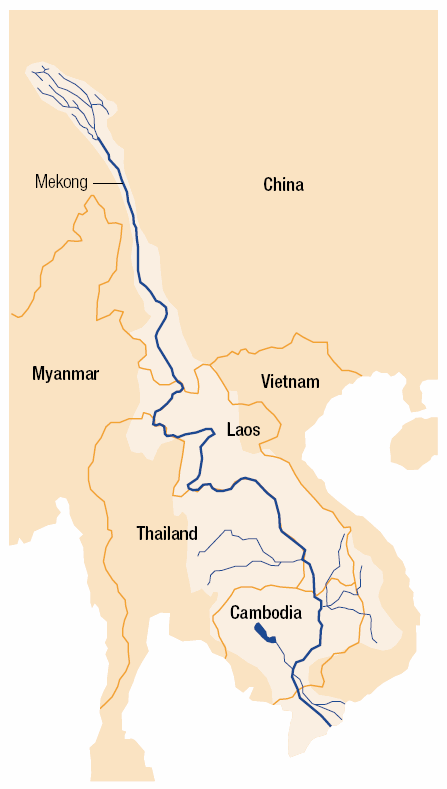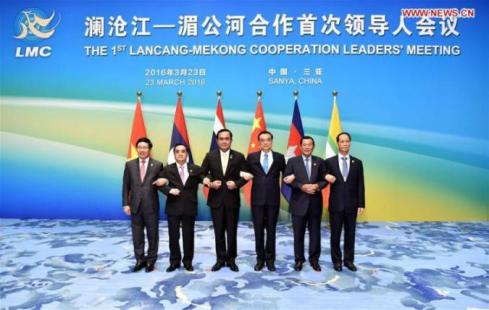On April 10, 2017, Dr. Zhifei Li, Associate Research Fellow from the National Institute of International Strategy at the Chinese Academy of Social Sciences (CASS) gave a presentation at the Sigur Center on China’s role and response in the hydropolitics of the Lancang-Mekong River.
By Leeann Ji, PISA Staff Assistant, April 10th
The Lancang River feeds into the Mekong River through the Yunnan Province of Southern China and flows into the downstream countries of Myanmar, Laos, Thailand, Cambodia, and Vietnam where more than 30 million people depend on this river for food, water, irrigation, transport, and power. Hydropolitics have become a primary point of both contention and cooperation in the region as China becomes increasingly involved in dam building on the Mekong River. Dr. Zhifei Li presented on China’s role in the Lancang-Mekong River disputes and shared with us her thoughts on the future of Asian hydropolitics.

Map of the Lancang-Mekong River (WWF)
In the last decade, China has taken a more cautious approach to dam building because it now feels an obligation to play a leading role as an upstream country in sustainably developing the Lancang-Mekong River. Downstream countries have become increasingly concerned with China’s damming of the Lancang-Mekong River, and they have accused China of using too much water. In 2016, Vietnam’s Mekong Delta suffered its worst drought in nearly a century, which prompted China to release water flow from its dams in the Yunnan Province. On March 23, 2016, leaders from the 6 Mekong River basin countries gathered in China to inaugurate the first meeting of the Lancang-Mekong River Cooperation (LMC). The LMC seeks to foster cooperation between the six basin countries over the sustainable development of the Mekong. When asked about China’s role in the LMC, Dr. Li optimistically notes that, “China will take on a leadership role while also considering the other 5 basin countries as equals.”

Leaders from the 6 basin countries at the first LMC meeting (MRC)
While China has taken the leading role in establishing dialogue over the Lancang-Mekong River’s development, it has also pursued bilateral data sharing and navigation agreements with the other basin countries. After hearing Dr. Li’s presentation on China’s involvement in the Lancang-Mekong River, PISA asks our followers to consider the following questions on what the future holds for Asian hydropolitics:
Will the tense relations between China and Vietnam over maritime territory in the South China Sea influence the negotiations over claims to the Lancang-Mekong River?
In recent years, China has increased its role of engagement in Asian affairs as seen with its ‘One Belt, One Road’ initiative. While it has affirmed its commitment to equal cooperation between all members of the LMC, will China’s sheer economic and political power supersede the other countries’ interests?
Ensuring water security and environmental protection in the Lancang-Mekong River Basin should be a humanitarian issue since many would argue that water exists as an inalienable human right. What impact do you think a Chinese leadership role in the LMC would have on management of the river basin?
At PISA, we encourage our followers to seek sustainable solutions to contentious issues. . With climate change and development increasing water scarcity around the world, water security has become more salient and dire. In her presentation, Dr. Li provided us with a hopeful view of China’s cooperation with the five basin countries over the sustainable development of the Lancang-Mekong River.
